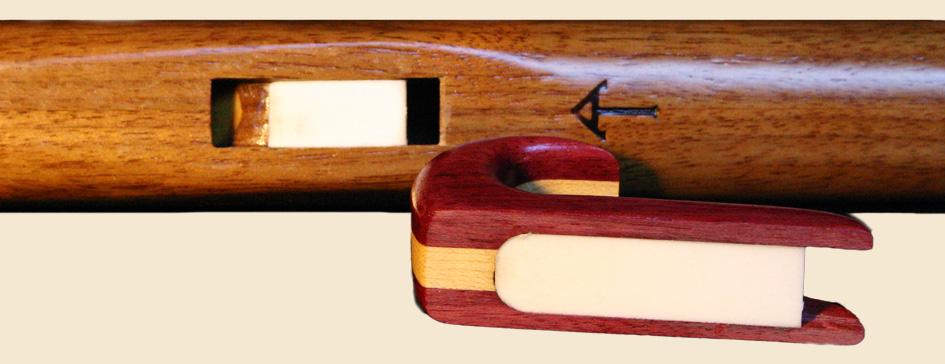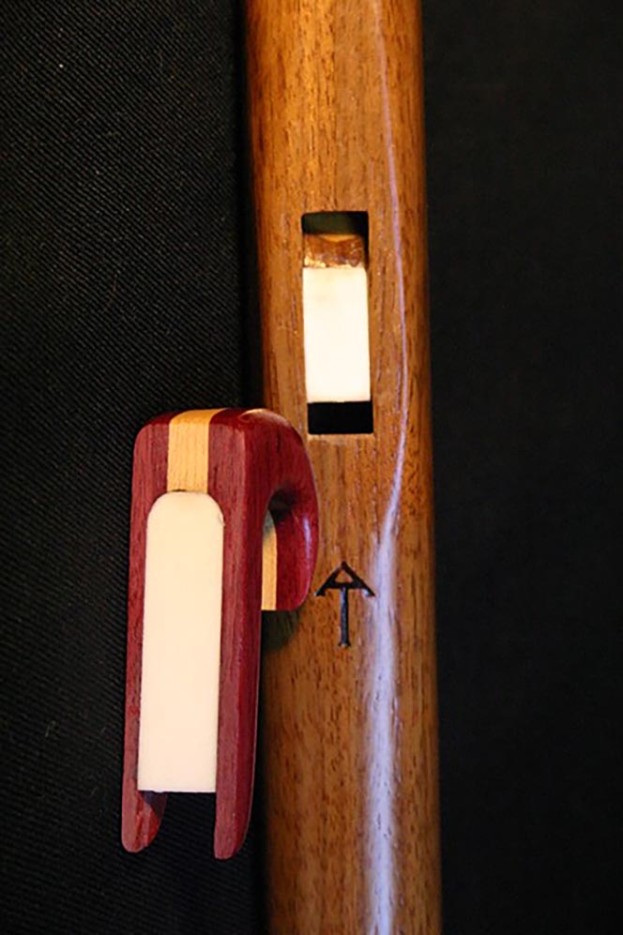Wet Out Protection
Wet Out and the Native American Style Flute
The most annoying problem associated with playing the Native American style flute is called “wet out”. Wet out is caused by the warm, moist air coming from your breath causing condensation to form on the walls of the slow air chamber, often called the SAC, of the flute. The condensation, in the form of droplets of water, then begins to migrate with the flow of air into the narrow flue of the flute. These water droplets disturb and impede the smooth flow of air and this causes distortions in the sound of the flute. When this happens you must stop playing, remove the bird, wipe and blow out the moisture and then replace the bird. It usually takes 10 or 15 minutes of continuous playing before a Love flute wets out. Wet out is more of a problem in colder conditions.
Some Native American style flute players are not bothered by wet out. For others it is a major problem. The wet out phenomenon is also psychological. Because the Native American flute is basically an improvisational instrument, and you are going to get into a creative groove you don't want to be interrupted in the middle of your creative experience by having your flute wet out. Because I was plagued by wet out myself I have done a lot of experimenting to find a solution.
A Solution for Love Flute Wet Out
 I have discovered that it is possible to stop wet out by lining the flue of the Love flute and the bottom of the bird with an absorbent hydrophilic plastic material. The plastic absorbs moisture like a sponge without changing dimension. Even when saturated the surface of the plastic has a surfactant quality. This prevents moisture from beading up on the surface of the plastic. Instead it sheets off into the barrel of the flute. It is droplets of water in the flue that distort the flow of air. Sometimes airflow is stopped completely.
I have discovered that it is possible to stop wet out by lining the flue of the Love flute and the bottom of the bird with an absorbent hydrophilic plastic material. The plastic absorbs moisture like a sponge without changing dimension. Even when saturated the surface of the plastic has a surfactant quality. This prevents moisture from beading up on the surface of the plastic. Instead it sheets off into the barrel of the flute. It is droplets of water in the flue that distort the flow of air. Sometimes airflow is stopped completely.
I have developed a method of retrofitting an existing Ancient Territories flute with this plastic material. This involves routing out a groove on the bottom of the bird and the flue of the flute. Next, I seal the resulting raw wood surfaces with two coats of polyurethane sanding between coats. Finally I must hand fit the plastic into the bird and flute and glue the pieces in place. Each piece of plastic must be carefully dimensioned. I cannot put wetout protection in flutes by other makers.
Because this is a time consuming procedure I have to charge and additional $50 for wet out protection. Also because of the difficulty I have in reselling flutes with wetout, if you buy a flute with wetout and choose to return it, the cost of the wetout will be deducted from your refund.





